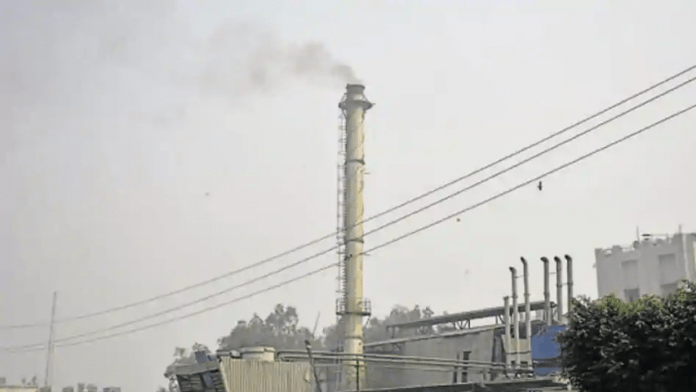Lower power demand growth and competition from renewable energy may have resulted in this reduction.
India’s CO2 emissions fell by around 1% in the financial year ending March 2020, which is the first year-on-year reduction recorded since 1982, according to a Centre for Research on Energy and Clean Air (CREA) .
The analysis is based on India’s financial year 2019-20 fossil fuel generation and consumption data including coal and oil.
The country’s CO2 emissions fell by an estimated 15% during the month of March and are likely to have fallen 30% in April, the analysis published in CarbonBrief, a portal on climate and energy news on Tuesday said.
Lower power demand growth and competition from renewable energy may have resulted in this reduction.
Coal-fired power generation fell by 15% in March and 31% in the first three weeks of April, based on daily data from the national grid according to the analysis. But renewable energy (RE) generation increased by 6.4% in March and saw a slight decrease of 1.4% in the first three weeks of April. One of the reasons for this is the “must run” status of renewable energy which allows it to reach the grid all the time except for safety concerns.
“We have seen that due to reduced demand for electricity during last year most of the drop in share of coal-based electricity is taken up by growth in renewable energy which is becoming more economical with every passing day. The per unit cost for renewable energy projects has come down to below most of installed coal-based power generation in India. The favourable economic conditions (lower cost per unit), being less polluting, better from climate change perspective, must run status for renewable energy projects and increasing installed capacity are the primary reason for renewable energy taking up a larger percentage of India’s electricity demand over the past year,” said Sunil Dahiya, analyst at CREA.
The energy related CO2 emissions in 2019 was 2201.865 MT CO2 equivalent compared to 2172.19 MT CO2 equivalent in the corresponding year, according to CREA.
“We review CO2 emissions every 2 years because we submit biennial update reports to the United Nations Framework Convention on Climate Change (UNFCCC). We have an inventory till 2016. If the assessment of this report (CREA) is true we will know later when inventory is updated,” said Ravi S Prasad, additional secretary, environment ministry and India’s lead climate negotiator at UN.
Two new papers published in the American Geophysical Union’s journal Geophysical Research Letters found that nitrogen dioxide pollution over northern China, Western Europe and the US decreased by as much as 60% in early 2020 as compared to the same time last year. The two new papers, based on satellite data of air pollution, are part of an ongoing special collection of research in AGU journals related to the Covid-19 pandemic.
Such a significant drop in emissions is unprecedented since air quality monitoring from satellites began in the 1990s, said Jenny Stavrakou, an atmospheric scientist at the Royal Belgian Institute for Space Aeronomy in Brussels and co-author of one of the papers, in a statement published in Science Daily on Monday.
In one of the two papers, the team found that NO2 pollution decreased by an average of 40% over Chinese cities and by 20 to 38% over Western Europe and the United States during January to April, as compared to the same time in 2019. However, NO2 pollution did not decrease over Iran, one of the earliest and hardest-hit countries. The authors suspect this is because complete lockdowns weren’t in place until late March and before that, other restrictions may have been ignored.
Experts said lockdown is a real-life experiment that gives significant clues on pollution control. “We now clearly understand the sources. To continue with good air quality and environment, we need industries all over the country to move to clean fuel, more gasification-based technologies and use of pollution control equipment like NOx scrubbers,” said SN Tripathi, head of civil engineering department at IIT Kanpur.


